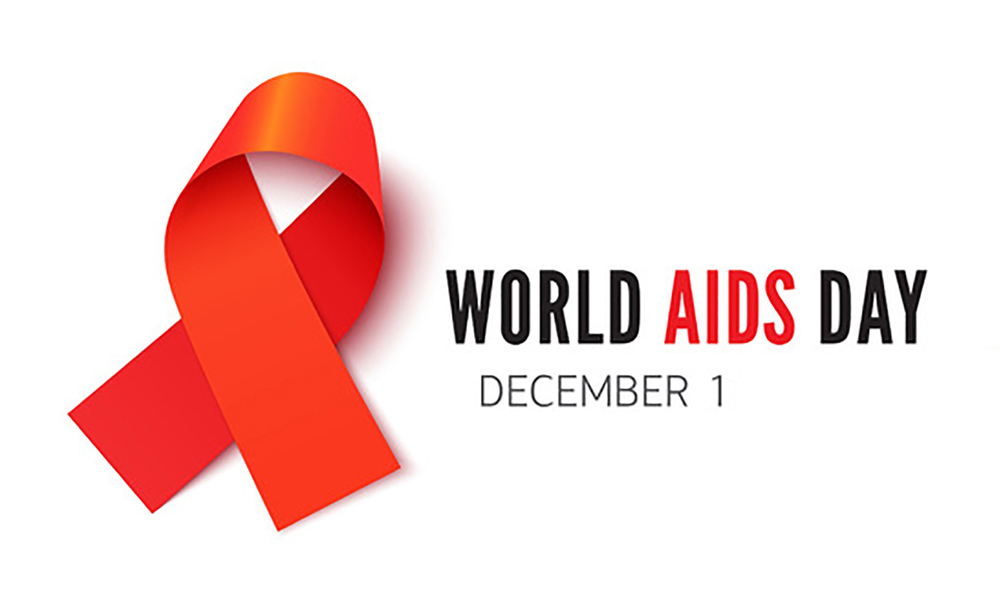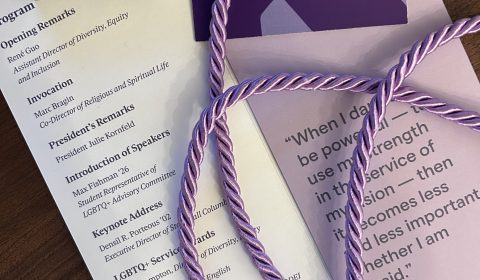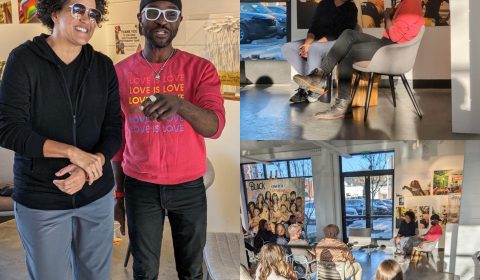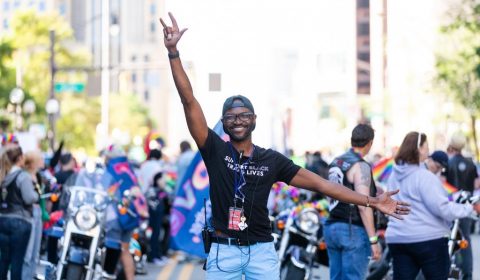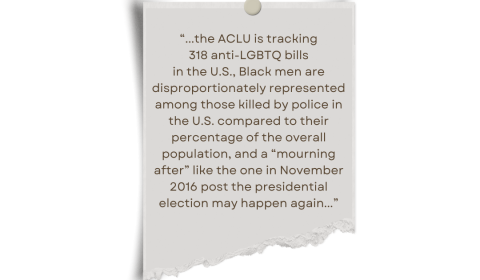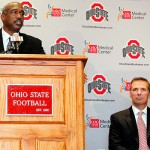I was born in the 80s in Jamaica, West Indies.
I grew up in a lower income Pentecostal home, in Brooklyn, New York.
I was the youngest and only boy of four children to a single mother.
The 80s were fun, but it was a very difficult time to be gay, to be black and gay.
I remember my mom telling me that men shouldn’t sleep with men because they would get AIDS and die. And although my mother wasn’t prepared to deal with her only son “possibly” being gay she had several gay friends. I remember her watching the people around her—her friends, gay and straight, lose their battle to HIV/AIDS and how that affected her—how it affected me.
So, when my mother received her positive diagnosis for HIV/AIDS, when I was just 11, it rocked my entire family. Her passing wasn’t sudden…but it was soon—she died less than 3 years later.
I was coming of age as HIV/AIDS was “coming of age” and society hadn’t given me, a queer black boy, a long life expectancy. As a queer Black cis-male I was made to believe that death because of HIV/AIDS was my destiny and yet it did not take me…it took my mother.
I am still here and still fighting for a life that was taken from me before I even had a chance to live it.
In 1988 HIV/AIDS activist Vito Russo shared the following during an ACT UP demonstration:
“So, if I’m dying from anything, I’m dying from homophobia. If I’m dying from anything, I’m dying from racism. If I’m dying from anything, it’s from indifference and red tape, because these are the things that are preventing an end to this crisis. If I’m dying from anything, I’m dying from Jesse Helms. If I’m dying from anything, I’m dying from the President of the United States. And, especially, if I’m dying from anything, I’m dying from the sensationalism of newspapers and magazines and television shows, which are interested in me, as a human interest story — only as long as I’m willing to be a helpless victim, but not if I’m fighting for my life.
If I’m dying from anything — I’m dying from the fact that not enough rich, white, heterosexual men have gotten AIDS for anybody to give a shit. You know, living with AIDS in this country is like living in the twilight zone. Living with AIDS is like living through a war which is happening only for those people who happen to be in the trenches. Every time a shell explodes, you look around and you discover that you’ve lost more of your friends, but nobody else notices. It isn’t happening to them. They’re walking the streets as though we weren’t living through some sort of nightmare. And only you can hear the screams of the people who are dying and their cries for help. No one else seems to be noticing.
And it’s worse than a war, because during a war people are united in a shared experience. This war has not united us, it’s divided us. It’s separated those of us with AIDS and those of us who fight for people with AIDS from the rest of the population.”
According to UNAIDS, in 2022, there were:
- 39 million people living with HIV
- 1.3 million people newly infected with HIV
- 630,000 people who died from AIDS-related illnesses
The global prevalence of HIV among adults (15–49 years old) was 0.7% in 2022. This is an increase from 31.5 million people living with HIV in 2010. In the United States, there are approximately 1.2 million people living with HIV.
“Certain subpopulations within racial and ethnic minority groups are disproportionately affected as well. For example, gay, bisexual and other men who have sex with men (MSM) are by far the most affected group in the United States. They account for about 66% of new infections each year, even though they make up only 2% of the population, with the highest burden among Black and Latino gay and bisexual men. According to CDC, in 2019, 26% of new HIV infections were among Black gay and bisexual men, 23% among Latino gay and bisexual men, and 45% among gay and bisexual men under the age of 35.
Among women, disparities also exist. Black women are disproportionately affected by HIV as compared to women of other races/ethnicities. Although annual HIV infections remained stable overall among Black women from 2015 to 2019, the rate of new HIV infections among Black women is 11 times that of white women and four times that of Latina women.
Further, over 1 million people identify as transgender in the United States. In 2019, adult and adolescent transgender people composed 2% (669) of new HIV diagnoses in the United States and dependent areas. Most of those new HIV diagnoses were among Black/African American transgender women.”
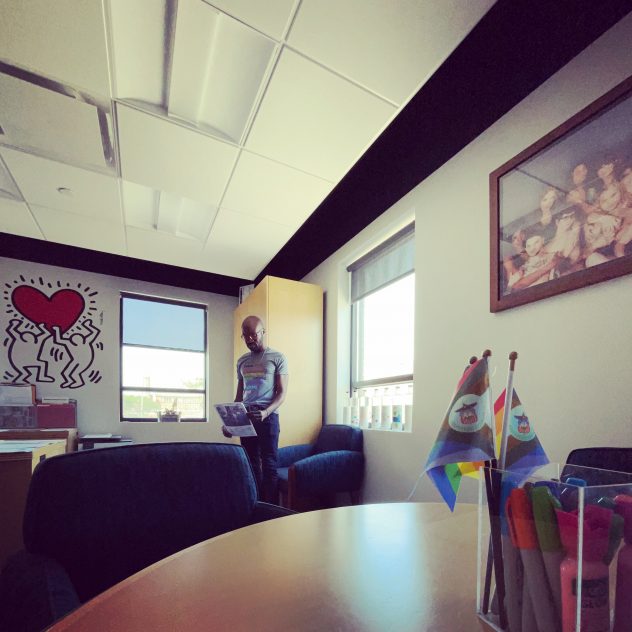 In my role at Stonewall Columbus, the office I occupy is a reflection of my commitment to creating space for those most in need, as we fight for equity and equality to ensure a community where all queer people are seen and thriving. It’s a space filled with symbols that echo the urgency of our work, none more poignant than the large vinyl replica of a Keith Haring piece. It serves as a constant reminder that the worldwide fight against HIV/AIDS is far from over, and its impact on the LGBTQ+/queer community has been profound. However, my life experience also reminds me that HIV/AIDS is not singularly a queer issue…my mother a heterosexual cis-female died of complications due to HIV/AIDS…so, that makes it a human issue.
In my role at Stonewall Columbus, the office I occupy is a reflection of my commitment to creating space for those most in need, as we fight for equity and equality to ensure a community where all queer people are seen and thriving. It’s a space filled with symbols that echo the urgency of our work, none more poignant than the large vinyl replica of a Keith Haring piece. It serves as a constant reminder that the worldwide fight against HIV/AIDS is far from over, and its impact on the LGBTQ+/queer community has been profound. However, my life experience also reminds me that HIV/AIDS is not singularly a queer issue…my mother a heterosexual cis-female died of complications due to HIV/AIDS…so, that makes it a human issue.
This fight is far from over and it will require all the disparate parts of our identities and communities coming together to ensure we end the HIV/AIDS epidemic. Each day, I am privileged to wake up and go to work in a space that I get to create for others. Each day, the spaces in which I exist become more emboldened because of the most authentic and full me that I elect to share. This World AIDS Day, let us draw strength from our shared experiences, honor those we have lost, and renew our commitment to creating a future where HIV/AIDS is no longer a threat to any community.
With love and compassion,
Densil
